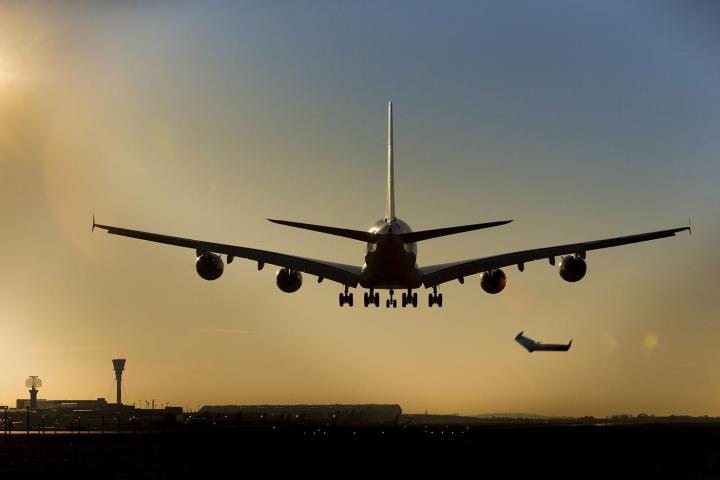
Thankfully there have so far been no reported incidents of the remotely controlled flying machines coming into direct contact with a much bigger aircraft full of pilots and passengers. But what if it does happen? What kind of damage could a quadcopter do to an airplane?
Having experienced a few near misses of its own in the past couple of the years, U.K. officials recently kicked off a study to try to discover if a drone hitting a plane really could bring down the larger aircraft.
Although the Daily Mail recently suggested the tests would involve crashing drones “into passenger jets in mid-air,” it appears the study doesn’t involve anything quite that dramatic.
The details of the experiments haven’t been released by the Department for Transport or the Civil Aviation Authority (the U.K.’s Federal Aviation Administration equivalent), and while real drones and planes are reportedly involved, it seems unlikely we’ll be seeing any large aircraft falling from the skies anytime soon.
For starters, the CAA told The Verge this week that the tests don’t involve actual mid-air collisions, and that smaller military jets, rather than passenger planes, are being used. It’s possible that data from flight tests will, for example, be used to create computer simulations to learn more about the possible effects of a drone colliding with a plane.
The results of the test are expected to be published by the end of this year.
Battery fears
A former British Airways pilot warned in March that a drone hitting a passenger plane could cause uncontrolled engine failure or badly damage a cockpit’s windshield. Steve Landells told the Guardian he was particularly concerned about what would happen if a quadcopter’s lithium battery got sucked into an engine. Landells suggested you could “end up with very high-velocity bits of metal going anywhere … through fuel tanks, through hydraulic lines and even into the cabin.”
“Losing the engine is not going to cause an aircraft to crash because they are designed to fly with one engine down,” the former pilot said. “But an uncontained engine failure is going to be different every time. That could be very serious indeed.”
Earlier this year the FAA said that data gathered in the U.S. suggested a “dramatic” rise in near misses involving unmanned aerial vehicles and manned aircraft. However, at around the same time, researchers suggested the FAA was overstating the threat that drones pose to aircraft.


